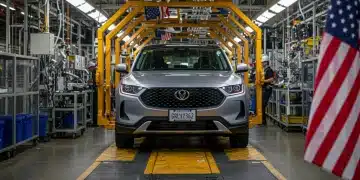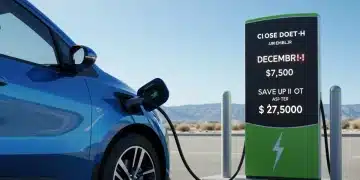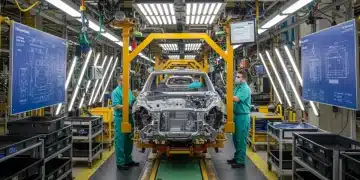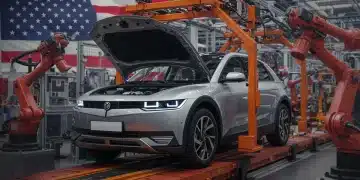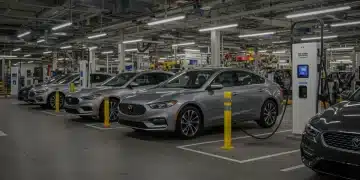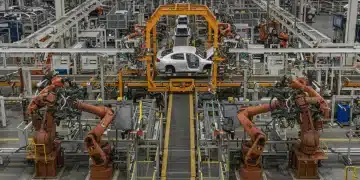2025 Federal EV Tax Credits: A US-Made Financial Guide
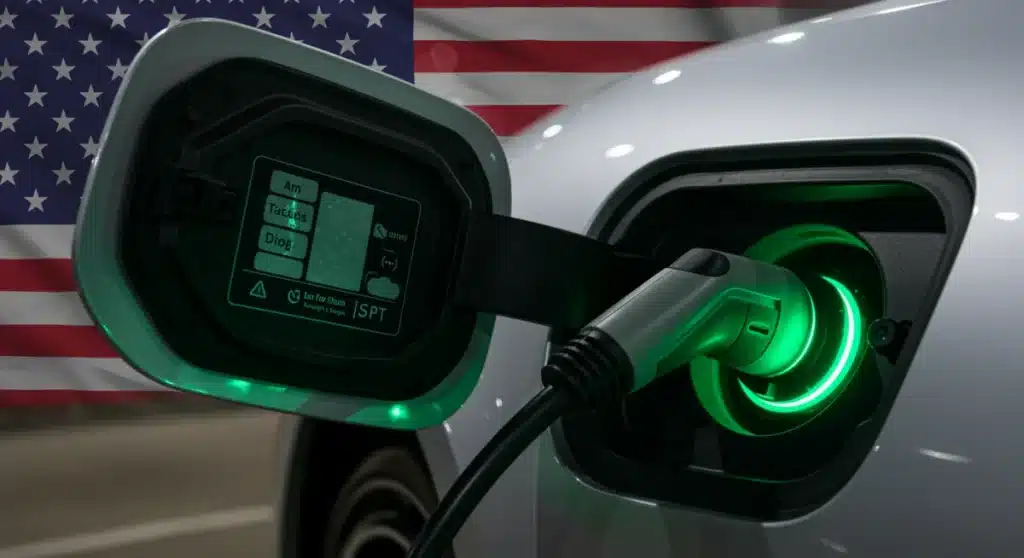
Understanding the 2025 federal tax credits for US-made electric vehicles is vital for consumers looking to leverage significant financial incentives, with eligibility depending on manufacturing origin, battery components, and buyer income thresholds.
As the automotive landscape rapidly electrifies, a critical financial component for consumers is Understanding the 2025 Federal Tax Credits for US-Made Electric Vehicles: A Financial Guide. These incentives are poised to play a significant role in accelerating the adoption of electric vehicles (EVs) across the nation, directly impacting buyer decisions and the auto industry’s strategic direction.
Decoding the 2025 Federal EV Tax Credits
The 2025 federal EV tax credits represent a substantial financial incentive designed to encourage consumers to purchase electric vehicles, particularly those manufactured in the United States. This initiative is part of a broader government strategy to bolster domestic manufacturing, reduce carbon emissions, and enhance energy independence. Potential buyers need to understand the nuances of these credits to maximize their savings.
The core of these credits lies in their dual purpose: stimulating demand for EVs and supporting the American automotive supply chain. With specific criteria tied to vehicle assembly and battery component sourcing, the credits aim to create a robust domestic ecosystem for EV production. This focus on local manufacturing is a key differentiator from previous incentive programs, signaling a clear shift in policy objectives.
Key Credit Components
- Base Credit Amount: A foundational credit is available for eligible vehicles, often split into two parts based on battery sourcing.
- Domestic Manufacturing Requirement: A significant portion of the credit depends on the vehicle’s final assembly occurring in North America.
- Battery Component Sourcing: A percentage of critical minerals and battery components must be sourced or processed in the U.S. or from a free-trade agreement country.
Why These Credits Matter Now
These credits are particularly relevant as of late 2024 and heading into 2025, given the ongoing adjustments by the Treasury Department and IRS to interpret and implement the Inflation Reduction Act’s (IRA) provisions. Automakers are actively reconfiguring their supply chains to meet these stringent requirements, making the list of eligible vehicles dynamic and subject to change. Consumers must stay informed about the latest updates to make informed purchasing decisions.
The immediate impact is on consumer purchasing power, making new EVs more accessible. For the auto industry, it drives investment in domestic manufacturing and critical mineral processing, creating jobs and fostering innovation within the U.S. This dual benefit underscores the strategic importance of these federal incentives.
Eligibility Criteria for Buyers and Vehicles
Navigating the eligibility requirements for the 2025 federal EV tax credits can be complex, as both the buyer and the vehicle must meet specific conditions. For buyers, income limitations are a primary hurdle, ensuring that the benefits are directed towards a broad range of consumers. For vehicles, the focus is on manufacturing origin and battery component sourcing, reinforcing the domestic production goals of the legislation.
Understanding these criteria is paramount for anyone considering an EV purchase in 2025. Failure to meet even one condition could result in the complete loss of the credit, making careful review essential. The IRS regularly updates its guidance, and consumers should consult official sources or tax professionals.
Buyer Income Limitations
The federal government has set clear adjusted gross income (AGI) caps for individuals and households to qualify for the full tax credit. These caps are designed to ensure that the credit primarily benefits middle and lower-income families, promoting equitable access to EV technology.
- Married Filing Jointly: AGI limit typically around $300,000.
- Head of Household: AGI limit often set at $225,000.
- All Other Filers: AGI limit usually around $150,000.
These income thresholds are crucial. If a buyer’s AGI exceeds these limits in the year the vehicle is placed in service or in the preceding tax year, they will not be eligible for the credit. It is important for prospective buyers to project their income for both years.
Vehicle Manufacturing and Sourcing
The most detailed and frequently updated requirements revolve around the vehicle itself. To qualify, a new clean vehicle must meet several criteria related to its assembly and battery components. This is where the ‘US-Made’ aspect becomes critical.
The final assembly of the vehicle must occur in North America. Beyond that, a specified percentage of the battery’s critical minerals must be extracted or processed in the U.S. or from a free-trade agreement country, or recycled in North America. Additionally, a percentage of the battery components must be manufactured or assembled in North America. These percentages are set to increase annually, making it progressively harder for vehicles to qualify if their supply chains are not localized.
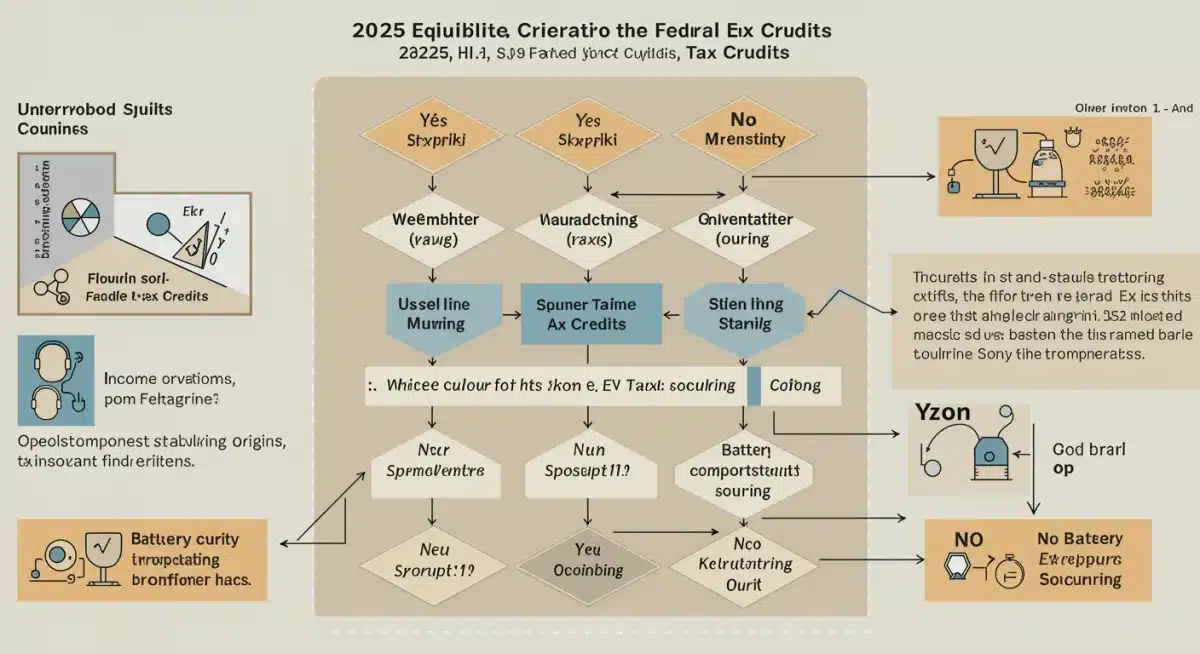
Maximizing Your Savings: Strategies for 2025
For consumers looking to purchase an electric vehicle in 2025, strategic planning is key to maximizing the available federal tax credits. Given the evolving nature of eligibility requirements and vehicle lists, proactive research and understanding of the rules can lead to substantial savings. This goes beyond simply checking a list of eligible vehicles; it involves timing your purchase and understanding your financial situation.
The dynamic nature of these incentives means that what qualifies today might not qualify tomorrow, or vice-versa, as manufacturers adjust their supply chains and the government issues new guidance. Staying informed through official IRS publications and reputable automotive news sources is essential.
Timely Purchase Considerations
The date of vehicle delivery is critical for securing the tax credit. The credit is applicable in the tax year the vehicle is ‘placed in service,’ which generally means when you take possession of it. This timing can be particularly important if your income is close to the AGI limits, as your income in the year of purchase or the preceding year determines eligibility.
Furthermore, as the percentages for battery component sourcing increase annually, a vehicle that qualifies in early 2025 might not qualify later in the year if its manufacturer hasn’t adjusted its supply chain. This creates a potential incentive for earlier purchases of certain models.
Dealer Reporting and Point-of-Sale Option
A significant development for 2025 is the ability for consumers to transfer the tax credit to the dealer at the point of sale. This effectively reduces the purchase price of the vehicle upfront, rather than waiting for tax season to claim the credit. This option can greatly improve accessibility for many buyers.
- Upfront Savings: Immediate reduction in vehicle cost.
- No Waiting for Tax Season: Avoids liquidity issues for buyers.
- Dealer Responsibility: Dealers must register with the IRS and provide necessary documentation.
For this to work, dealers must be registered with the IRS Clean Vehicle Tax Credit program and provide a clean vehicle seller report to the IRS. Buyers should confirm their dealer’s participation and understand the process before committing to a purchase.
Impact on the US Automotive Industry
The 2025 federal EV tax credits are not just about consumer savings; they represent a powerful lever for reshaping the US automotive industry. By prioritizing domestically manufactured vehicles and components, these incentives are driving significant investment, innovation, and job creation within the United States. This strategic focus aims to reduce reliance on foreign supply chains and establish America as a leader in EV production.
Automakers are responding by re-evaluating their global supply chains, forging new partnerships, and investing heavily in US-based facilities for battery production and vehicle assembly. This shift is creating a ripple effect across various sectors, from mining and materials processing to advanced manufacturing and software development.
Reshoring Manufacturing and Supply Chains
The ‘US-made’ requirement has spurred a concerted effort to bring critical manufacturing processes back to North America. This includes not only vehicle assembly but also the extraction and processing of critical minerals like lithium, cobalt, and nickel, and the manufacturing of battery cells and modules. This reshoring is vital for national security and economic resilience.
Companies are investing billions in new factories and expanding existing ones, creating thousands of high-paying jobs. This investment is concentrated in regions historically known for automotive manufacturing, revitalizing local economies and fostering new skill sets.
Innovation and Technological Advancement
The push for domestic production also fuels innovation. Manufacturers are incentivized to develop more efficient, cost-effective, and environmentally friendly methods for producing EVs and their components within the U.S. This includes advancements in battery technology, charging infrastructure, and sustainable manufacturing practices.
The competitive landscape created by these credits encourages companies to accelerate research and development, leading to better vehicles for consumers and a more sustainable industry overall. This focus on advanced technological capabilities is crucial for maintaining a global competitive edge.
The Role of Battery Component Sourcing
A critical, and often complex, aspect of the 2025 federal EV tax credits is the stringent requirement for battery component sourcing. This provision directly targets the supply chain of electric vehicle batteries, aiming to reduce dependence on non-allied nations and bolster domestic and free-trade partner production of essential materials. Understanding these rules is vital for both manufacturers and consumers, as they directly impact which vehicles qualify for the full credit amount.
The requirements specify percentages of critical minerals and battery components that must be sourced or processed in the U.S. or from countries with which the U.S. has a free trade agreement. These percentages are not static; they increase annually, making compliance an ongoing challenge for automakers and a dynamic factor for consumers to monitor.
Critical Mineral Requirements
A significant portion of the tax credit is tied to the origin of critical minerals contained in the EV battery. These minerals, such as lithium, cobalt, and graphite, are essential for battery performance and longevity. The rules stipulate that a certain percentage by value of these minerals must be:
- Extracted or processed in the United States.
- Extracted or processed in a country with which the United States has a free trade agreement in effect.
- Recycled in North America.
This provision encourages the development of domestic mining and refining capabilities, as well as robust recycling infrastructure. It also strengthens economic ties with key trade partners, diversifying the global supply chain away from potential geopolitical risks.
Battery Component Manufacturing
Beyond critical minerals, a separate portion of the tax credit is contingent on the origin of the battery components themselves. This includes items like battery cells, modules, and other sub-components. The requirement is that a specific percentage by value of these components must be:
- Manufactured or assembled in North America.
This incentivizes automakers and their suppliers to establish or expand battery manufacturing facilities within the U.S., fostering a robust domestic industry. The increasing percentages year over year mean that manufacturers must continuously adapt their production strategies to maintain eligibility for the full tax credit, impacting vehicle design and cost.
Looking Ahead: Future of EV Incentives
The landscape of federal EV incentives is not static; it is designed to evolve in response to market conditions, technological advancements, and geopolitical shifts. As we move beyond 2025, it’s crucial for consumers, manufacturers, and policymakers to consider the potential trajectory of these credits and their broader implications for the electric vehicle market. The current framework under the Inflation Reduction Act provides a foundation, but future adjustments are always possible.
One key area of observation will be how well the current incentives achieve their dual goals of boosting EV adoption and strengthening domestic supply chains. The success metrics will likely influence any future legislative actions or adjustments to existing programs, keeping the market in a state of continuous adaptation.
Potential Adjustments and Sunset Clauses
While the Inflation Reduction Act provides a long-term framework, specific provisions, including the critical mineral and battery component percentages, are set to escalate annually. This inherent escalation acts as a self-adjusting mechanism, continuously pushing manufacturers towards greater domestic content. However, there’s always the possibility of legislative amendments or extensions depending on the political climate and economic impact.
Some tax credit programs have sunset clauses, meaning they are scheduled to expire on a specific date unless renewed. While the IRA’s EV credits are currently set through 2032, their effectiveness will be continuously evaluated, and public and industry feedback could lead to modifications or early cessation if deemed ineffective or no longer necessary.
The Role of State and Local Incentives
Beyond federal programs, state and local governments continue to offer various incentives for EV purchases, charging infrastructure, and renewable energy integration. These can significantly compound the federal benefits, making EV ownership even more attractive. Consumers should research what additional programs are available in their specific geographic area.
- State Tax Credits/Rebates: Many states offer their own financial incentives, often stackable with federal credits.
- Utility Programs: Local electric utilities may provide rebates for home charger installation or discounted charging rates.
- HOV Lane Access: Some states grant EVs access to high-occupancy vehicle lanes, offering a non-monetary but valuable incentive.
Combining federal, state, and local incentives can dramatically reduce the total cost of EV ownership, making the transition more financially viable for a wider range of consumers. This layered approach to incentives is a powerful driver for the broader adoption of electric vehicles.
| Key Point | Brief Description |
|---|---|
| Eligibility Criteria | Applies to both buyer income and vehicle manufacturing/battery sourcing. |
| US-Made Focus | Credits prioritize vehicles with North American final assembly and battery components. |
| Point-of-Sale Option | Buyers can transfer credit to dealer for immediate price reduction. |
| Dynamic Requirements | Battery sourcing percentages increase annually, affecting vehicle eligibility. |
Frequently Asked Questions About 2025 EV Tax Credits
Individual filers generally face an Adjusted Gross Income (AGI) limit of $150,000, while heads of household have a limit of $225,000, and married couples filing jointly have a $300,000 limit. These caps apply to the year of purchase or the preceding tax year.
For a vehicle to qualify, its final assembly must occur in North America. Additionally, specific percentages of its battery’s critical minerals must be sourced from the U.S. or free-trade partners, and battery components must be manufactured in North America.
Yes, for 2025, buyers can opt to transfer the tax credit to the dealership at the point of sale. This allows for an immediate reduction in the purchase price, rather than waiting to claim the credit when filing your taxes.
Yes, a separate credit is available for used clean vehicles, offering up to $4,000. This credit also has specific income limitations for buyers and requirements for the vehicle’s age, sale price, and dealer registration.
The official IRS website provides the most up-to-date information on eligible clean vehicles for the federal tax credits. This list is frequently updated as manufacturers adjust their supply chains and new guidance is issued.
What Happens Next – Policy Impact and Consumer Strategy
The implementation of the 2025 federal tax credits for US-made electric vehicles represents a defining shift in national industrial policy, marking a transition from incentive-based encouragement to structured economic steering of consumer behavior and manufacturing priorities. As these credits come into effect, their real impact will depend heavily on how effectively automakers can adapt their battery sourcing strategies, how clearly the IRS communicates eligibility rules, and how proactive consumers are in understanding the evolving requirements for qualification.
Going forward, the landscape will remain fluid. The list of eligible EV models will shift as manufacturers reconfigure their supply chains to comply with domestic content requirements, and new models enter the market under revised qualification standards. Consumers looking to optimize financial benefits will need to stay informed through credible financial guidance sources such as EV tax credit breakdowns from NerdWallet, which provide clarity on qualification criteria, income thresholds, and point-of-sale credit mechanisms.
From a strategic standpoint, the success of these credits in driving domestic EV adoption and localized production will serve as a benchmark for future policy refinement. If early adoption data aligns with government targets, policymakers may expand or revise the credit framework, potentially extending benefits to charging infrastructure, battery recycling incentives, and secondary market EV purchases. Industry analysts also anticipate quarterly Treasury and IRS updates, which will shape how both automakers and consumers engage with the incentive ecosystem.
Ultimately, this phase represents more than a financial incentive—it’s a policy testbed that will determine the pace and structure of America’s transition to electric mobility. Those who remain informed and adapt quickly, whether manufacturers or buyers, will secure the greatest strategic and economic advantage in this new regulatory environment.
